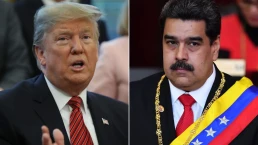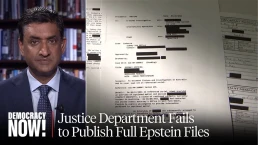The United States must avoid another arms race based on untested or distinctly false premises.
By William Hartung, Defense One
After last month’s Chinese test of a hypersonic missile, Joint Chiefs of Staff chair Gen. Mark Milley described it as “very close” to a “Sputnik moment,” alluding to the Soviet Union’s 1957 satellite launch that sent shock waves through U.S. media, government, and society. The concern was that if Moscow could put a radio beacon into orbit, a nuclear-armed, long-range ballistic missile could not be far behind. The event, which displayed an unexpected level of technological sophistication, sparked a surge in U.S. investment in military, space, and scientific research and development.

But Gen. Milley’s Sputnik sound bite doesn’t hold up. China’s ability to put a hypersonic missile into space should have been no great surprise, given Beijing’s long efforts to develop related technology. And the Chinese test missile missed its target by 24 miles, suggesting that Beijing still has a ways to go in mastering hypersonic flight. As veteran defense analyst and nuclear weapons expert Fred Kaplan has noted, “a new type of Chinese missile is triggering panic among some U.S. defense officials, but the alarms are overblown.”
A closer analogue to the Chinese test may be the missile gap controversy of the 1950s, in which military officials, the arms industry, and prominent Democratic Senators alleged that the Eisenhower administration had allowed the United States to “fall behind” in the development and production of intercontinental ballistic missiles, to the detriment of national security. After some resistance, the Eisenhower administration boosted ICBM production and deployment, a pivotal move that set the stage for the intense U.S.-Soviet arms race of the 1960s. The Kennedy administration proceeded with the race even after U.S. intelligence revealed in 1961 that, in fact, the U.S. ballistic missile force far outstripped that of the Soviet Union. Defense Secretary Robert McNamara decided to build 1,200 ICBMs, despite analyses from his own department that a substantially lower figure would be sufficient for deterrence. Thankfully, he resisted the Strategic Air Command’s proposal to build up to 10,000 of such missiles. But a missile race based on false premises proceeded nonetheless.
Recent Posts
The “President Of Peace” Prepares For War
December 23, 2025
Take Action Now The Donroe Doctrine Hits HomeBy William D. Hartung, Tom Dispatch Earlier this month, the Trump administration released its new…
“Who Are They Protecting?”: Rep. Ro Khanna Urges Contempt Charges Over AG Bondi’s Epstein Redactions
December 22, 2025
Take Action Now “The House can act unilaterally on contempt, and this will be introduced by Thomas Massie. What the resolution will say is that…
Dems Demand Answers as Trump Photo Disappears From DOJ Online Epstein Files
December 21, 2025
Take Action Now “What else is being covered up?”By Brett Wilkins, Common Dreams Congressional Democrats on Saturday pressed US Attorney General…
Elon Musk Is Vowing Utopia Driven by AI and Robotics. Bernie Sanders Has a Few Questions
December 20, 2025
Take Action Now “I look forward to hearing about how you and your other oligarch friends are going to provide working people with a magnificent life…




